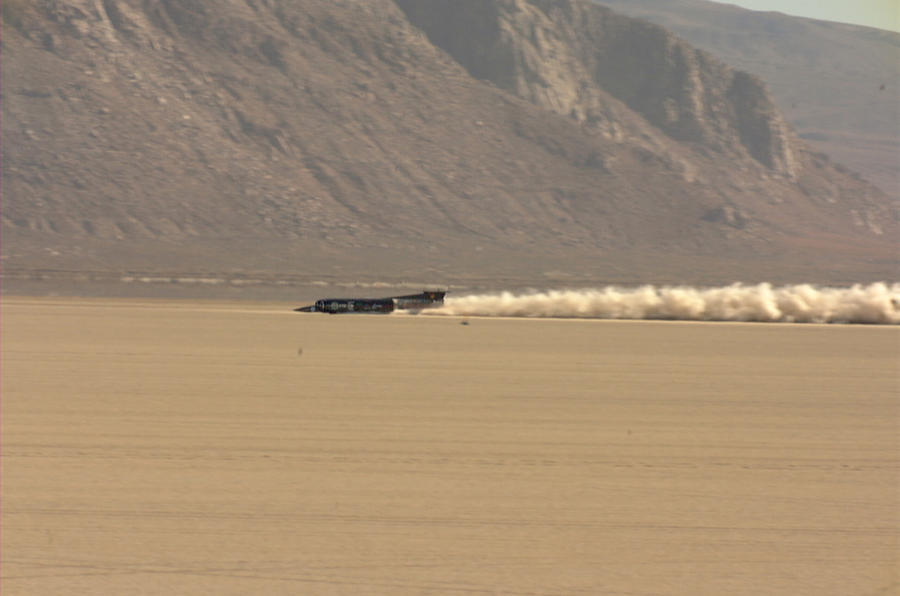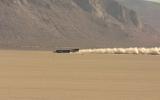Yesterday I took the decidedly subsonic train up to central Coventry to meet the fastest ground-level human on the planet.
RAF Wing Commander Andy Green holds the world land speed record - a supersonic 763.035mph in Thrust SSC on 15 October 1997 in the Black Rock desert in Nevada. Not only that, he also holds the diesel-fired land speed record - 350.092mph in the JCB DieselMax on the Bonneville Salt Flats on 23 August 2006.
The rendezvous was at Coventry’s Transport Museum, which is currently undergoing a revamp. A new display room houses the last two British land speed record holders - Thrust 2 (which hit 633.468mph in October 1983) and Thrust SSC - together with the new Bloodhound SSC.
If everything goes to plan, Bloodhound - which will also be piloted by Andy Green - will have hit 1000mph on a South African desert by the end of the year or early in 2016.
You might think, as I did, that Green is the UK’s go-to land speed record pilot because of his background flying Phantom and Tornado jets for the Royal Air Force. That’s obviously part of the reason, but he also happens to be a maths whizz. The sort of whizz who got a first in his Mathematics degree at Worcester College, Oxford.
I like to dig into a vehicle’s engineering, but talking to Green about the design of the Bloodhound was a wholly different experience to the average automotive technical briefing.
Judging by the conversation with Green, trying to run a wheeled vehicle - powered by both a jet engine and a three-bore rocket - up to 1000mph and stopping it again requires a huge grasp of higher-level physics and maths.
Green tears into explaining the huge engineering challenges with rapid-fire reference to fundamentals you might vaguely remember from school.
Indeed, I heard him use the term ‘the area under a curve’ when taking about the calculations they needed to do when working on slowing the Bloodhound down. It’s the first reference to that concept I’ve heard since my ill-fated attempt at O-level maths in 1983.












Join the debate
Add your comment
It shows you
Not wishing to divert people away from Autocar...